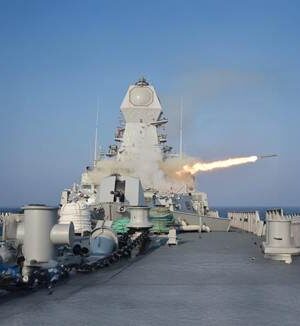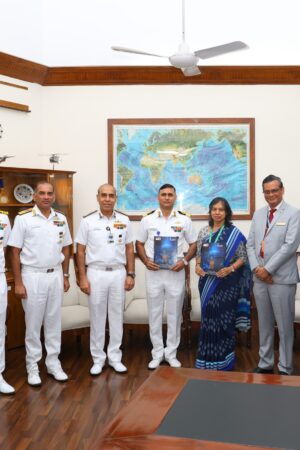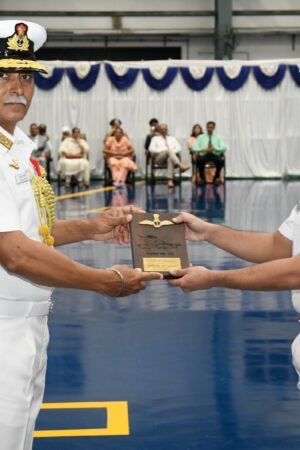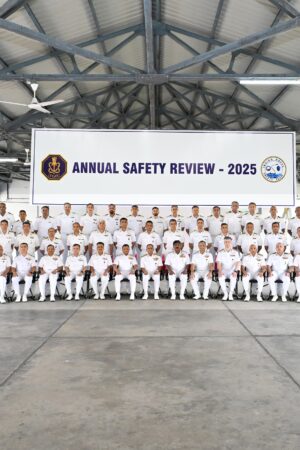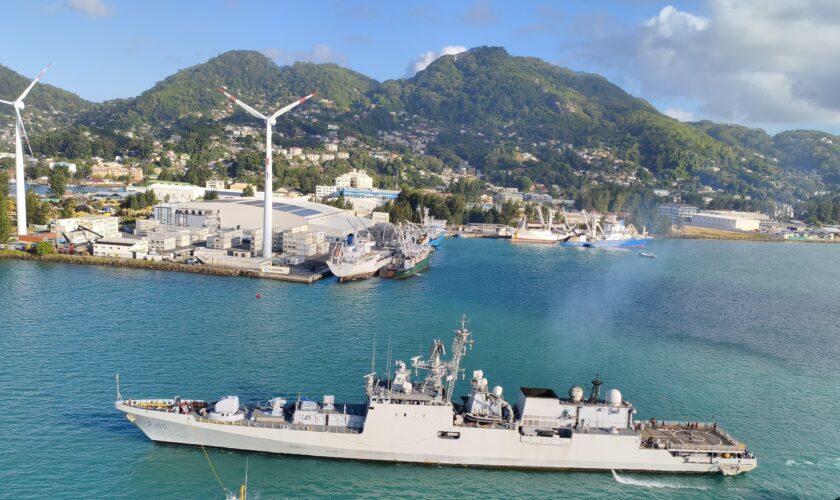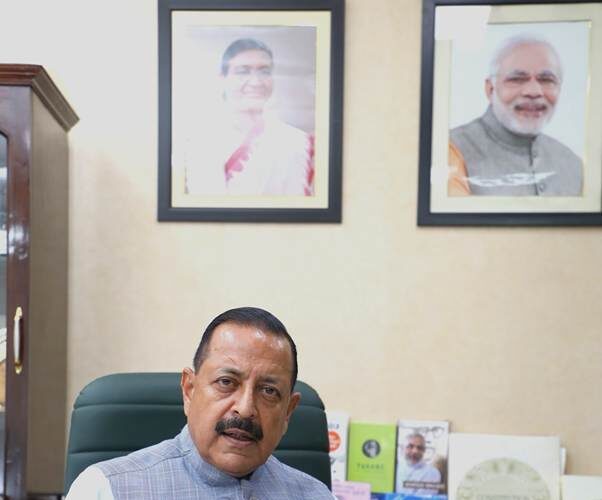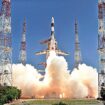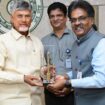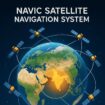INS Teg, a frontline stealth frigate of the Western Naval Command, concluded a port visit at Port Victoria, Seychelles on 30 Jun 2025. The visit formed part of the ship’s operational deployment to the South West Indian Ocean Region and featured a wide spectrum of professional, social and cultural engagements, underscoring the maritime partnership between India and Seychelles.
On arrival at Port Victoria on 26 Jun 2025, the Commanding Officer called on senior government and military officials of Seychelles, including Maj Gen Michael Rosette, Chief of Defence Forces (CDF) SPDF, Mr Sylvestre Radegonde, the Minister of Home Affairs and Mr Kartik Pande, the High Commissioner of India to Seychelles (HCI). The officers and crew also interacted with senior government functionaries and officials from the Indian High Commission onboard the ship. These discussions contributed to strengthening camaraderie, bilateral ties and promoting cooperation in the maritime domain.
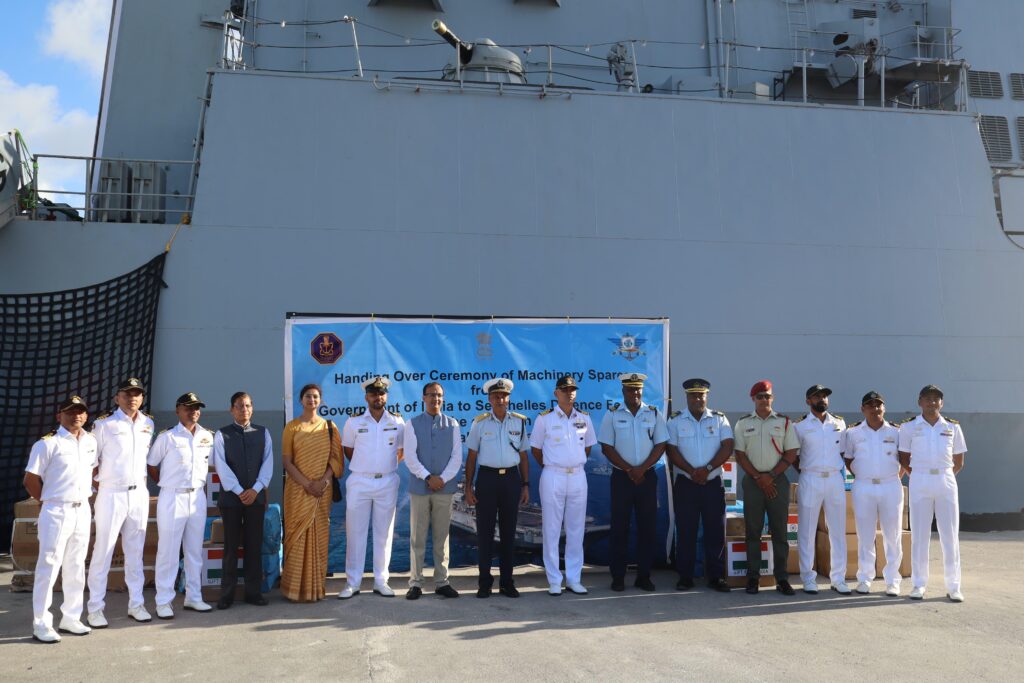
As part of cultural outreach, a yoga session, in line with the International Day of Yoga 2025 theme “Yoga for One Earth, One Health”, was conducted onboard on 28 Jun 2025 with enthusiastic participation by the local populace, Indian diaspora and the ship’s crew.
Towards fostering greater understanding of the Indian Navy’s role and capabilities, the ship was open to visitors at Port Victoria on 28 Jun 2025. About 200 visitors were provided a guided tour of the ship and the entire event garnered immense interest and appreciation for the Indian Navy’s efforts in promoting maritime security in the region.
A cultural evening was hosted onboard the ship on 28 Jul 25. Invitees included the CDF, the Minister of Foreign Affairs and Tourism, the Minister for Agriculture, the Minister for Community Affairs, other functionaries from the Govt of Seychelles, the HCI, envoys of friendly foreign nations including France, Japan, USA, Indonesia and Sri Lanka, and members of the Indian diaspora. During his address the CDF highlighted the vibrant India-Seychelles defence partnership including support for capacity building through joint military exercises and regular port calls by Indian Naval ships. The programme facilitated a productive exchange of professional views, followed by a captivating performance by the Naval band, a vibrant dance performance by the ship’s crew and delectable Indian cuisine during dinner.
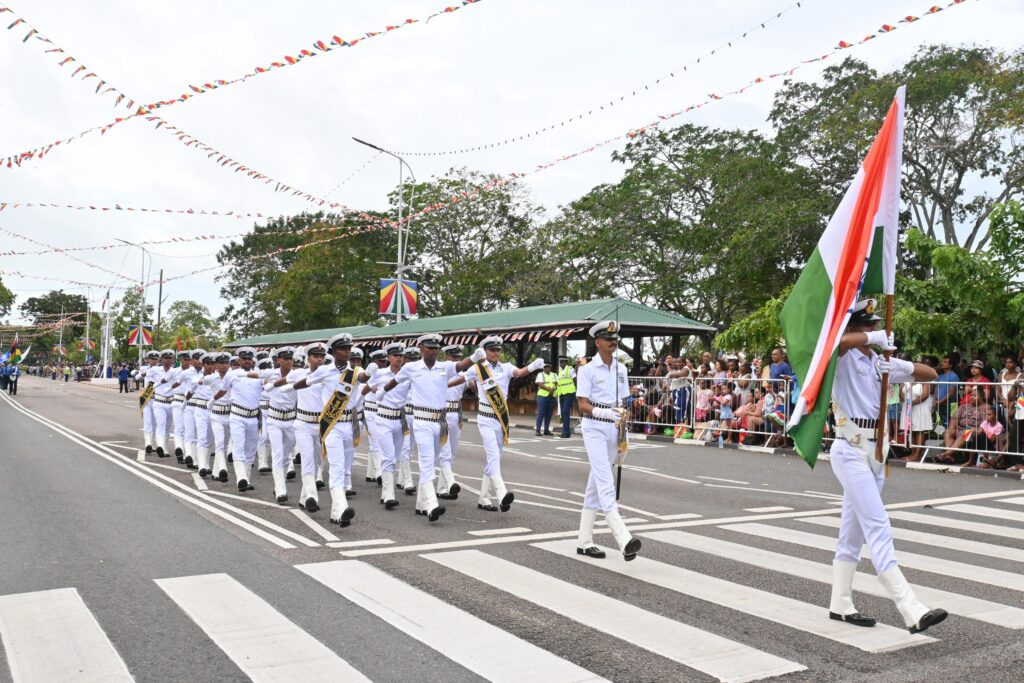
The highlight of the port call was participation of a marching contingent from the ship along with the famed Indian Naval Band in a parade to commemorate the 49th National Day of Seychelles on 29 June 2025. A flypast was also undertaken by the ship’s integral helicopter during the parade. The enthusiasm and standards of marching showcased by the contingent attracted appreciation from all quarters.
On completion of her port call on 30 Jun 2025, the ship embarked personnel from the Seychelles Coast Guard (SCG) for joint surveillance of Seychelles EEZ from 30 Jun -02 Jul 2025. This initiative reaffirms India’s commitment towards safety of the global commons and combating Illegal, Unreported and Unregulated (IUU) fishing. The ship will proceed with the next phase of deployment post disembarking the SCG personnel.
This visit stands testament to the Indian Navy’s commitment to strengthen maritime security cooperation and bilateral relations between the two nations.


